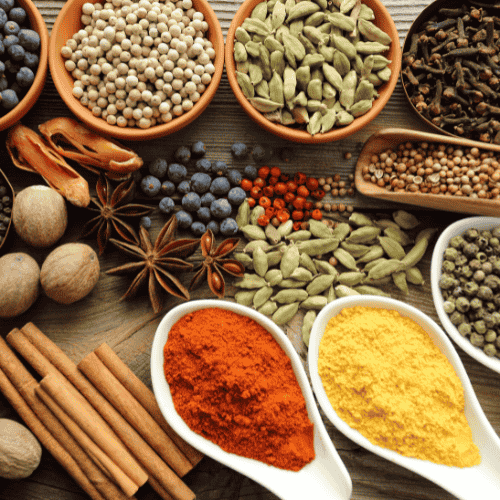| Color |
Varies widely (e.g., red for paprika, green for coriander, yellow for turmeric) |
| Types |
Red Chilli, Cumin, Coriander, Turmeric, Fennel, Fenugreek, Cardamom, Mustard, Ginger, and Black Pepper |
| Shape |
Can be whole (e.g., cloves, cinnamon sticks) or ground into a fine powder |
| Texture |
Granular, coarse, or fine, depending on the spice |
| Aroma |
Strong and aromatic; varies by spice (e.g., sweet, pungent, or earthy) |
| Taste |
Flavor profiles vary significantly (e.g., spicy, sweet, bitter, tangy) |
| Moisture Content |
Typically low; should be around 5-10% for proper storage |
| Nutritional Content |
Varies, often rich in antioxidants, vitamins, and minerals |
| Solubility |
Some spices dissolve in water (e.g., turmeric) while others do not (e.g., whole spices) |
| Origin |
Sourced globally, with specific regions known for particular spices (e.g., black pepper from India, saffron from Iran) |
| Uses |
Culinary, medicinal, and as preservatives; used in cooking, baking, and beverages |
| Storage |
Best stored in airtight containers, away from light and heat |
| Shelf Life |
Generally 1-3 years, depending on the spice type and storage conditions |


